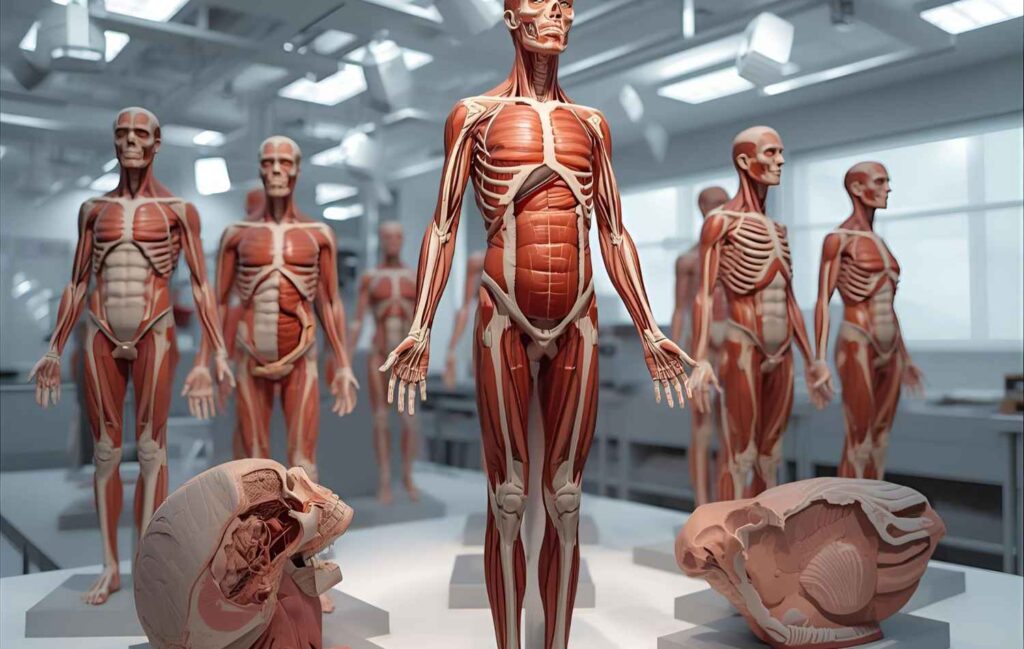
Anatomy is one of the most fundamental and challenging subjects in medical school. Success in anatomy exams requires structured and methodical preparation that begins well before exam day. In the modern medical world, deep understanding of human body structure forms the foundation for all successful medical practice.
Which Basic Body Systems Should You Master First?
Before diving into complex systems, it's crucial to build a solid foundation in basic body systems. The skeletal system serves as the ideal starting point – knowing the bones of the body, joints, and anatomical landmarks provides a reference framework for all other structures. After this, the muscular system develops naturally from understanding the skeleton, where it's important to know the origin and insertion of major muscles.
The central nervous system requires special attention, from brain and spinal cord structure to peripheral nerves. Leading scientific research shows that gradual learning of the nervous system improves exam performance by approximately 30% compared to random study.
How Do You Prepare for Learning the Cardiovascular System?
The heart and circulatory system constitute a complex domain requiring three-dimensional understanding of structures. Starting with gross anatomy of the heart – chambers, valves, and major vessels – creates a foundation for understanding advanced physiology.
Biotech Anatomy LTD offers a unique approach to learning the cardiac system through hands-on practice on real human organs. Our advanced scientific facility enables doctors and students to experience the complexity of the cardiovascular system directly and practically.
What's the Right Approach to Learning the Respiratory System?
The respiratory system requires understanding of hierarchical structure – from the finest alveoli to the upper respiratory tract. Research in the British Medical Journal indicates that students learning respiratory anatomy in a structured method achieve 25% higher scores.
Emphasis on the relationship between structure and function is crucial – understanding how alveolar shape suits gas exchange, or how tracheal structure enables efficient airflow.
How Do You Handle the Challenges of Learning the Digestive System?
The digestive system is one of the longest and most branched systems in the body. The recommended approach is segmental learning – starting from the oral cavity, through the esophagus, stomach, small and large intestines, to accessory digestive glands like the liver and pancreas.
Combining theoretical study with radiological imaging from the National Institutes of Health deepens understanding. Each segment requires understanding of its anatomical relationships to surrounding structures.
What Are the Best Techniques for Learning Histological Anatomy?
Microscopic anatomy presents an additional challenge requiring special tools. Knowing the basic tissue types – epithelial, connective, muscle, and nerve – is essential as a foundation. Learning from authentic tissue samples under a microscope enables deeper understanding than pictures in books.
The National Human Genome Research Institute emphasizes the importance of understanding the relationship between cellular structure and function at the tissue level.
How Do You Integrate Radiological Imaging in Study?
In the era of modern medicine, understanding radiological anatomy is crucial. CT, MRI, and ultrasound present anatomy from different perspectives, and the ability to interpret these images is required from early study stages.
Training medical teams at our facility includes hands-on experience with advanced imaging technologies. We provide a unique combination of learning on real organs alongside coordinated radiological imaging, enabling complete three-dimensional understanding.
Which Memory Strategies Work Best in Anatomy?
Effective memorization techniques are crucial for success. Creating acronyms to remember sequences (like cranial nerves), using flashcards for active learning, and hand-drawing diagrams strengthen visual memory.
The best method is spaced repetition – short, efficient daily study is preferable to concentrated study before exams. Neurological studies from the National Institute of Brain Sciences prove that spaced learning improves long-term memory by 40%.
How Do You Create an Effective Study Plan for Exams?
Early planning of 8-10 weeks before the exam allows thorough study. Dividing material into thematic weeks, with one week per system, ensures comprehensive coverage. The final week should be dedicated to comprehensive review and solving past exams.
Diversifying study methods is crucial – combining reading, video watching, hands-on practice with physical models, and group work enriches the learning experience. biotechanatomy provides high accessibility and proximity to home for new practitioners, enabling continuous and comprehensive practice.
Does Practice on Real Organs Improve Exam Performance?
The clear answer is yes. Practice on real human organs provides a dimension of understanding impossible to achieve from models or textbooks. Texture, size, spatial relationships, and natural variations between humans – all are experienced only through real practice.
Our company's advanced scientific facility enables performing procedures on the real human body in a collaborative surgical environment. All under Ministry of Health supervision, with professional handling of remains and full support throughout the process.
Proper planning for anatomy studies requires strategic thinking, appropriate resources, and above all – daily persistence. Investment in hands-on and interactive learning yields optimal exam results and more importantly – creates a solid foundation for a successful medical career.
